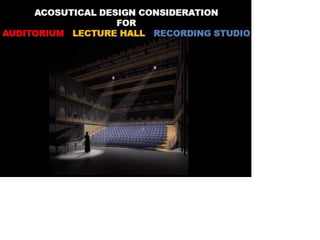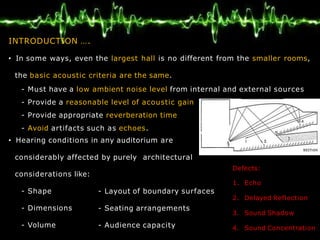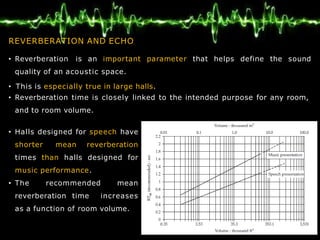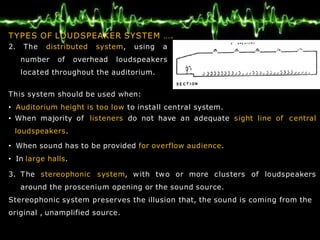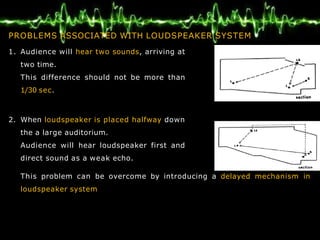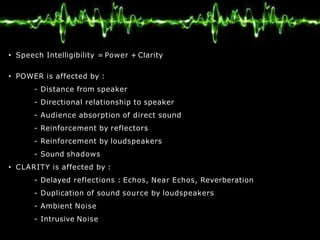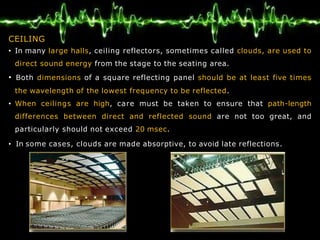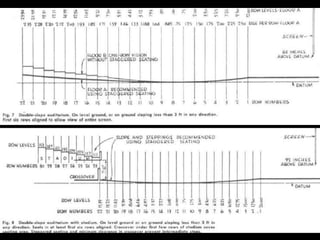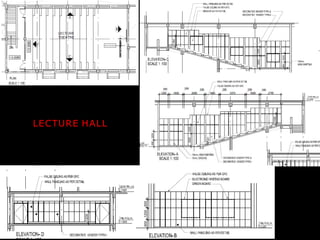The document discusses key considerations in the design of auditoriums and recording studios. It addresses factors like room shape, dimensions, absorption, reverberation time, ambient noise levels, and how they impact acoustics. Optimal design aims to provide clear sound across all seating areas while avoiding echoes or other artifacts. Standards provide guidelines on design elements like volume-to-seat ratios and ceiling heights to achieve good speech intelligibility or musical quality depending on the room's function.
